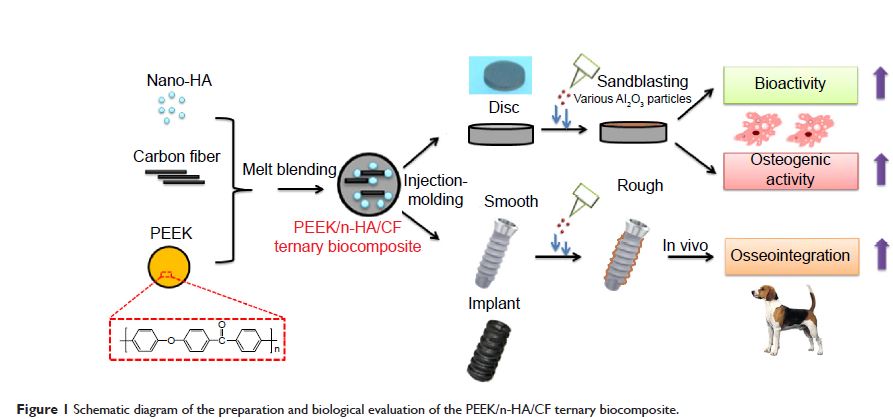109669
论文已发表
注册即可获取德孚的最新动态
IF 收录期刊
- 3.4 Breast Cancer (Dove Med Press)
- 3.2 Clin Epidemiol
- 2.6 Cancer Manag Res
- 2.9 Infect Drug Resist
- 3.7 Clin Interv Aging
- 5.1 Drug Des Dev Ther
- 3.1 Int J Chronic Obstr
- 6.6 Int J Nanomed
- 2.6 Int J Women's Health
- 2.9 Neuropsych Dis Treat
- 2.8 OncoTargets Ther
- 2.0 Patient Prefer Adher
- 2.2 Ther Clin Risk Manag
- 2.5 J Pain Res
- 3.0 Diabet Metab Synd Ob
- 3.2 Psychol Res Behav Ma
- 3.4 Nat Sci Sleep
- 1.8 Pharmgenomics Pers Med
- 2.0 Risk Manag Healthc Policy
- 4.1 J Inflamm Res
- 2.0 Int J Gen Med
- 3.4 J Hepatocell Carcinoma
- 3.0 J Asthma Allergy
- 2.2 Clin Cosmet Investig Dermatol
- 2.4 J Multidiscip Healthc

碳纤维增强聚醚醚酮- 纳米羟基磷灰石复合体的表面粗糙度对体外成骨和体内骨整合的影响
Authors Deng Y, Liu X, Xu A, Wang L, Luo Z, Zheng Y, Deng F, Wei J, Tang Z, Wei S
Published Date February 2015 Volume 2015:10 Pages 1425—1447
DOI http://dx.doi.org/10.2147/IJN.S75557
Received 8 October 2014, Accepted 26 November 2014, Published 17 February 2015
Abstract: As United
States Food and Drug Administration-approved implantable material, carbon
fiber-reinforced polyetheretherketone (CFRPEEK) possesses an adjustable elastic
modulus similar to cortical bone and is a prime candidate to replace surgical
metallic implants. The bioinertness and inferior osteogenic properties of
CFRPEEK, however, limit its clinical application as orthopedic/dental implants.
In this study, CFRPEEK–nanohydroxyapatite ternary composites (PEEK/n-HA/CF)
with variable surface roughness have been successfully fabricated. The effect
of surface roughness on their in vitro cellular responses of osteoblast-like
MG-63 cells (attachment, proliferation, apoptosis, and differentiation) and in
vivo osseointegration is evaluated. The results show that the hydrophilicity
and the amount of Ca ions on the surface are significantly improved as the
surface roughness of composite increases. In cell culture tests, the results
reveal that the cell proliferation rate and the extent of osteogenic
differentiation of cells are a function of the size of surface roughness. The composite
with moderate surface roughness significantly increases cell
attachment/proliferation and promotes the production of alkaline phosphatase
(ALP) activity and calcium nodule formation compared with the other groups.
More importantly, the PEEK/n-HA/CF implant with appropriate surface roughness
exhibits remarkably enhanced bioactivity and osseointegration in vivo in the
animal experiment. These findings will provide critical guidance for the design
of CFRPEEK-based implants with optimal roughness to regulate cellular
behaviors, and to enhance biocompability and osseointegration. Meanwhile, the
PEEK/n-HA/CF ternary composite with optimal surface roughness might hold great
potential as bioactive biomaterial for bone grafting and tissue engineering
applications.
Keywords: polyetheretherketone,
tenary, biocomposite, bioactivity, bone formation
